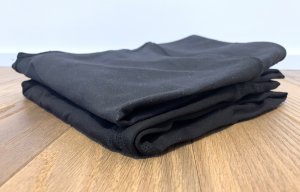
Sustainable solutions for dark nylons
Earthcolors make use of agriculture waste products and can be used to provide rich red, brown and green colours.

17th November 2014
Knitting Industry
|
Reinach
Earthcolors make use of agriculture waste products that would otherwise be sent to landfill. They can be used to provide rich red, brown and green colours to denim and casual wear, the company reports.
“Our aim is to give consumers a choice,” explained Alan Cunningham, Head of Textiles Dyes Marketing at Archroma. “We all should have the possibility to choose the fashion option with the least environmental impact and to be safe in the knowledge that there is substance behind what is claimed on the label. With Earthcolors, we allow just that.”
Archroma is providing brand owners with a possibility of transparency along the complete supply chain for Earthcolors. The company will also put all the information about individual batches of colour on hang tags to be attached to each item of clothing.
Each hang tag incorporates a chip with all the information on it, which can be accessed by the prospective buyer in the shop using Near Field Communications (NFC) technology incorporated into their phone. Archroma believes that this is the first time that NFC is being used in this way.
NFC is a relative of RFID, or Radio Frequency Identification, which many retailers already use for tracking products. But NFC is said to be more sophisticated and more consumer friendly. Archroma is hoping that it will provide shoppers with a more involved buying experience.
The chip can contain information such as the mill, which dyed the fabric and where the garment was laundered, as well as the source of bio-based raw material.
The new dyes, which Archroma describes as biosynthetic sulfur dyes, have been four years in the making.

They have the overall performance of the company’s existing range of sulfur dyes made from conventional raw materials. Archroma describes this new development as a step-change in dyes manufacturing and coloration technology.
To make Earthcolors, Archroma transforms biomass from waste products of the agriculture and herbal sectors in a patent-pending process.
“Not one square metre of land is set aside to grow the raw material for these dyes, so there is no competition for arable land,” said Cunningham. The new range is produced near Barcelona, Spain, with all raw materials sourced from within a radius of 500 km.

“At Archroma we are dedicated to developing the latest technologies to deliver fashion trends in the most sustainable ways possible,” commented Cunningham. “We aim at helping brand owners and textile mills by letting them know how our colors are made, and how and where our raw materials are made. We are more than happy to share that information, not only with our customers, but also the final consumer.”

Business intelligence for the fibre, textiles and apparel industries: technologies, innovations, markets, investments, trade policy, sourcing, strategy...
Find out more